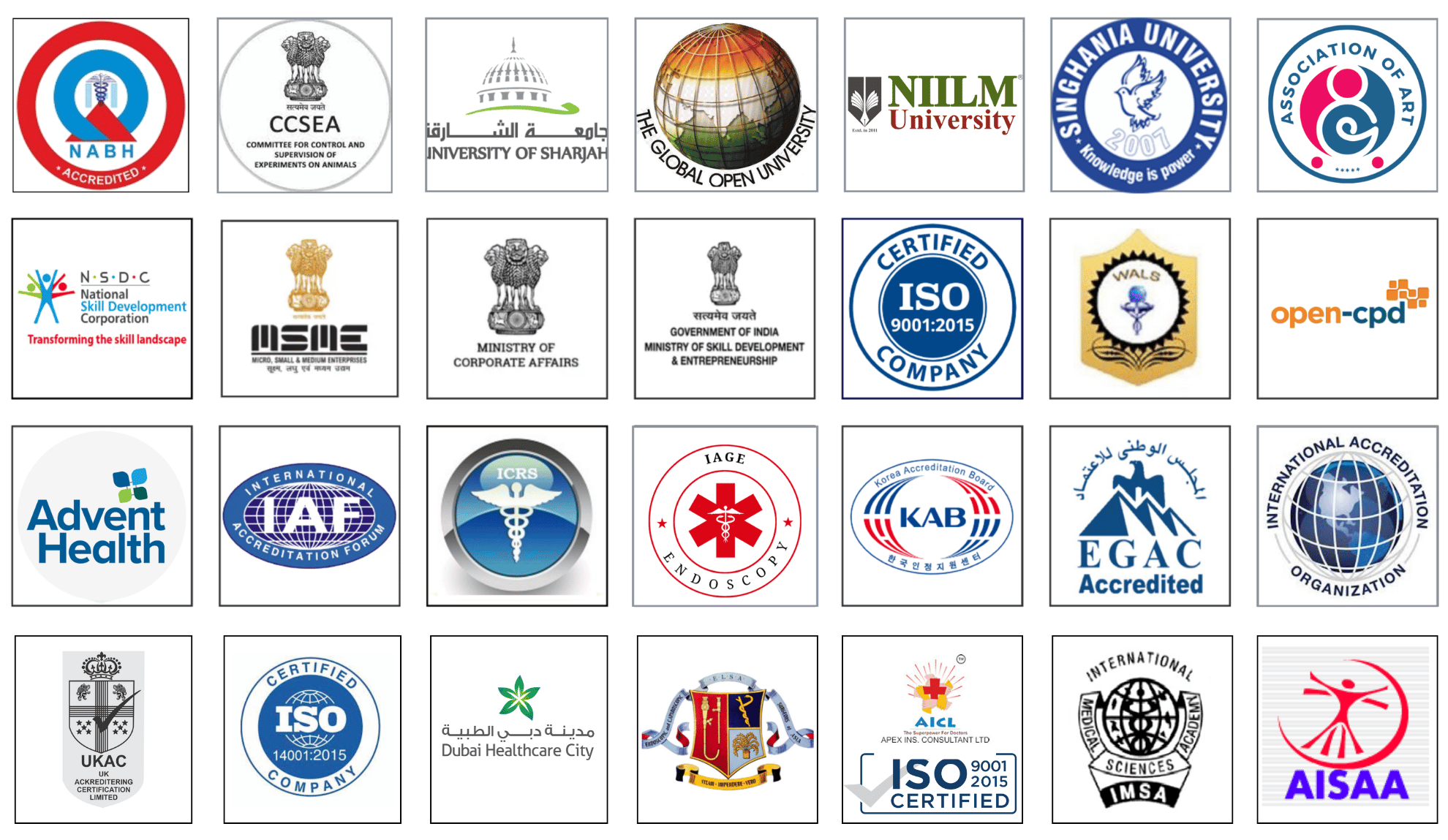https://www.laparoscopyhospital.com/SERV01.HTM
This video demonstrates Fluorescence Angiography During Laparoscopic Sleeve Gastrectomy performed by Dr. R. K. Mishra at World Laparoscopy Hospital. A new technology involving indocyanine green (ICG) fluorescence angiography has been introduced to assess tissue perfusion and perform vascular mapping during laparoscopic surgery. The purpose of this video was to describe the use of this technology to identify the variable blood supply patterns to the stomach and gastroesophageal (GE) junction during laparoscopic sleeve gastrectomy (LSG), which may help in preserving the blood supply and preventing ischemia-related leaks.
Fluorescence imaging is currently being used for multiple applications across multiple subspecialties of surgery. Regarding gastrointestinal surgery, this technology can be used to assess proper tissue perfusion and vascular mapping of the patient's arterial/venous anatomy, as described in this article. Our group is currently exploring this technology in LSG cases to perform “perfusion-preserving” dissection and checking for adequate perfusion of the sleeve product afterward.
Fluorescence Angiography During Laparoscopic Sleeve Gastrectomy: Enhancing Surgical Precision and Patient Outcomes
Introduction Laparoscopic Sleeve Gastrectomy (LSG) has become one of the most popular and effective bariatric procedures for managing obesity and its associated comorbidities. Despite its success, complications such as staple line leaks and inadequate tissue perfusion remain concerns for surgeons. Fluorescence angiography (FA) using indocyanine green (ICG) dye has emerged as an innovative technique to enhance intraoperative assessment of tissue perfusion, minimizing complications and improving patient safety.
Understanding Fluorescence Angiography Fluorescence angiography is a real-time imaging technique that utilizes indocyanine green (ICG), a fluorescent dye that binds to plasma proteins and circulates within the bloodstream. When exposed to near-infrared (NIR) light, ICG emits fluorescence, allowing surgeons to visualize blood flow and tissue perfusion. This method provides immediate feedback on vascular integrity, which is critical in ensuring the viability of the gastric sleeve.
Application of FA in Laparoscopic Sleeve Gastrectomy During LSG, the stomach is resected along the greater curvature, leaving a narrow, tube-like gastric remnant. Ensuring adequate blood supply to the staple line is crucial to prevent ischemia and subsequent complications. FA with ICG is used to assess:
- Staple Line Perfusion: By injecting ICG intravenously and using an NIR camera, surgeons can determine areas with reduced blood flow, allowing for intraoperative adjustments.
- Identification of High-Risk Zones: FA helps detect poorly perfused gastric tissue, enabling selective reinforcement or modification of staple lines.
- Real-Time Decision Making: Unlike traditional visual inspection, FA provides objective, dynamic imaging, leading to more precise and evidence-based surgical decisions.
Benefits of Fluorescence Angiography in LSG
- Reduction in Staple Line Leaks: Poor perfusion is a major risk factor for leaks. FA allows for proactive identification and correction of ischemic areas before finalizing the resection.
- Improved Patient Safety: By minimizing ischemia-related complications, FA contributes to better postoperative outcomes and faster recovery.
- Enhanced Surgeon Confidence: Real-time visualization aids in decision-making, leading to more precise and effective surgical interventions.
- Cost-Effectiveness: While FA adds an initial expense, preventing complications such as leaks and reoperations significantly reduces overall healthcare costs.
Limitations and Considerations Despite its advantages, FA has some limitations:
- Learning Curve: Surgeons need proper training to interpret fluorescence signals accurately.
- Equipment Availability: Not all surgical centers have access to NIR imaging systems.
- ICG-Related Allergies: Though rare, some patients may have hypersensitivity reactions to the dye.
Conclusion
Fluorescence angiography represents a significant advancement in laparoscopic sleeve gastrectomy, offering a real-time, objective assessment of tissue perfusion. By integrating FA into bariatric surgery, surgeons can enhance safety, reduce complications, and improve patient outcomes. As technology continues to evolve, the widespread adoption of this technique may become a standard in metabolic surgery, ensuring better long-term success for patients undergoing LSG.
Contact us:
World Laparoscopy Hospital
Cyber City, Gurugram, NCR Delhi, INDIA
Phone/WhatsApp: +919811416838, +919999677788
World Laparoscopy Training Institute
Bld. No: 27, DHCC, Dubai, UAE
Phone: +971525857874
World Laparoscopy Training Institute
8320 Inv Dr, Tallahassee, Florida, USA
Phone: +1 321 250 765
| Older Post | Home | Newer Post |


